
MENUMENU
TALK TO AN EXPERT
Special Hours: 7AM – 6PM PST
TALK TO AN EXPERT
Special Hours: 7AM – 6PM PST
When wiring multiple solar panels together in a system, you have two primary choices: series and paralle or a combination of the two. Determining whether you wire your solar panels in series or parallel mainly depends on your application. Let’s examine the differences and when each method is best.
The main difference between wiring solar panels in series or parallel is the output voltage and current.
When you wire multiple panels in series, their output voltages add together, and their output current remains the same. Conversely, when you wire numerous solar panels in parallel, their output currents add together. But their output voltages stay the same.
Let’s take a closer look at how this works and how to wire panels in series and parallel.
To wire solar panels in series, connect the positive terminal on the first panel to the negative terminal on the next, and so on. The resulting voltage will be the sum of all of the panel voltages in the series. However, the total current will be equal to the output current of a single panel.
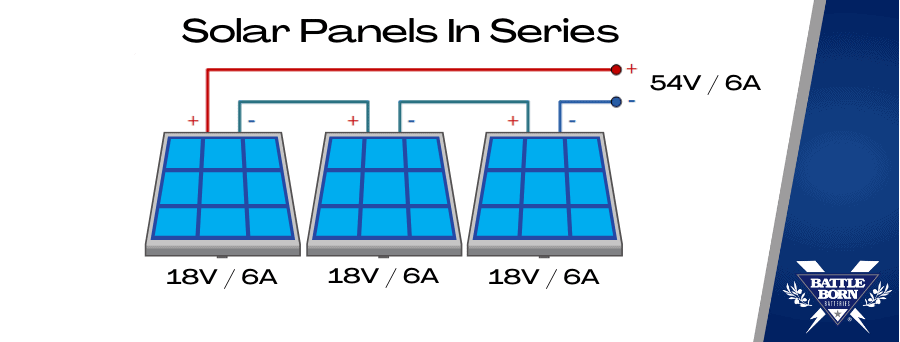
For example, in the graphic above, we have three 18-volt, 6-amp panels wired in series. The output voltage is 54 volts (18V + 18V + 18V = 54V), yet the output current is still 6 amps.
Solar panels in series are optimal in unshaded conditions. If shade covers a single panel of your series array, it will bring down the whole system’s power output. Each panel in a series connection is critical.
Solar panels in series are also best if you need a low-amperage system. To calculate the output power of a solar system, multiply the voltage by the current. If you have a higher voltage system, your amperage will be lower. Lower amperage allows you to use smaller gauge wires which are less expensive and easier to work with.
One important thing to know is that you will need to use an MPPT charge controller when wiring your panels in series. MPPT charge controllers regulate the voltage and current from the solar panels to match the battery bank’s voltage without sacrificing power. If you use a PWM controller, the battery will pull the total panel array voltage down to match it, and you will lose a lot of power.
❓MPPT or PWM charge controller? Discover the difference and what’s right for you.

To wire solar panels in parallel, connect all of the positive terminals on each panel together and then do the same for the negative terminals.
The resulting current will be the sum of all of the panel amperages in the parallel array. However, the total voltage will be equal to the output voltage of a single panel.
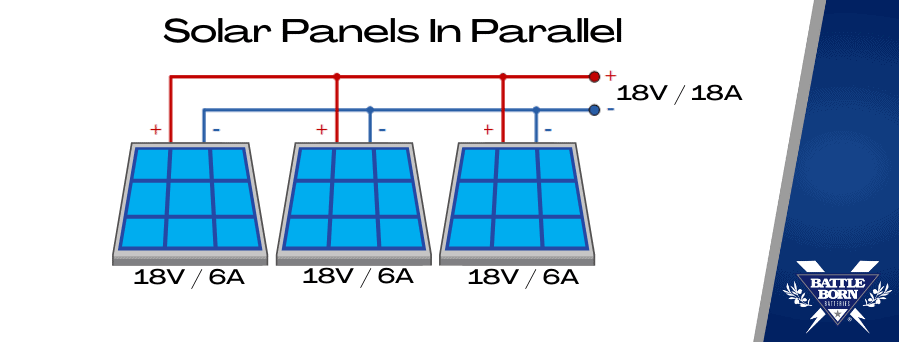
For example, in the graphic above, we have three 18-volt, 6-amp panels wired in parallel. The output current is 18 amps (6A + 6A + 6A = 18A), yet the output voltage is still 18 volts.
Solar panels in parallel operate more independently of one another and therefore are the best option for mixed-light conditions. If shade covers one or two of your panels, the remaining panels in the array will be less affected by the shade than a series array.
Parallel solar arrays are also ideal when you want a low voltage system using a lower-cost PWM controller. Again, wiring multiple solar panels in parallel doesn’t change the total output voltage.
So, if your panel output voltage matches your nominal battery charging voltage, a parallel array allows you to increase your output charging current without needing to regulate the voltage.
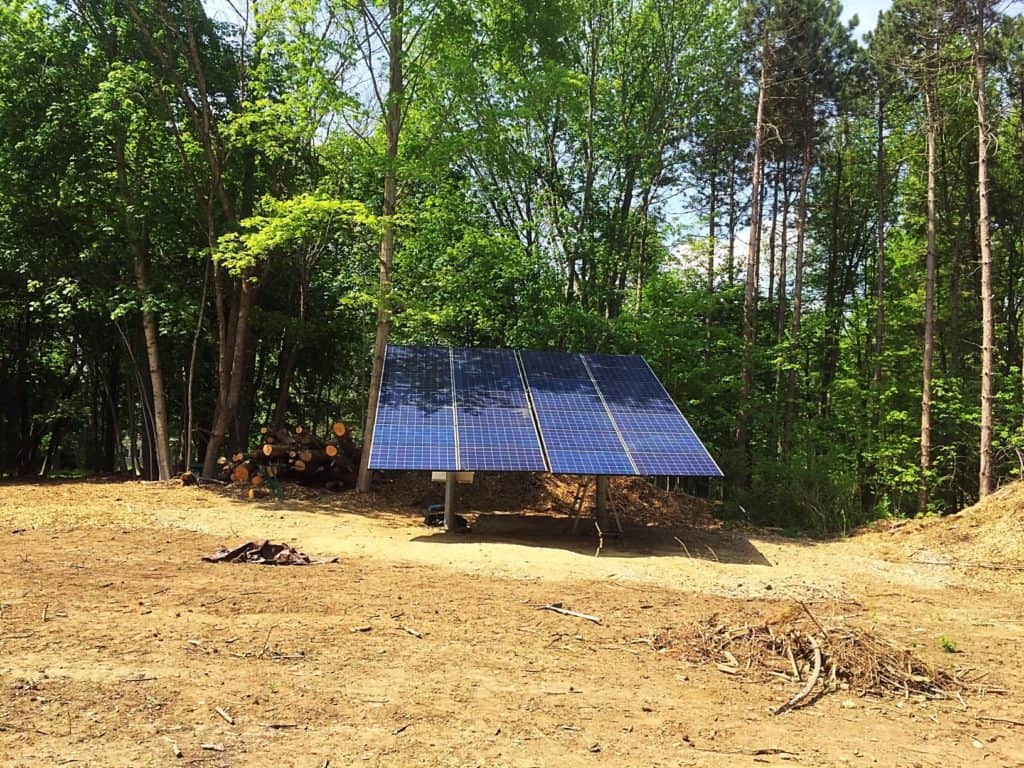
Now, let’s talk about which option is better. So, should you wire your solar panels in series or parallel? Well, again, it truly depends on your application.
Connecting your solar panels in series is often preferred if you’re able to spend most of your time in unshaded locations. The main reason for this is that your solar panel system will be more efficient and will perform better at the beginning and end of the day and when it’s cloudy. Here’s why.
Batteries require a higher voltage than their nominal voltage to charge. For example, our lithium batteries need 14.4 volts to start charging. Most solar panels in the 100-watt range have an output voltage between 18-20 volts. To reach the 14.4 volts required to charge your batteries, solar panels in parallel would need to be operating at 75% capacity or more.
→ Find out more about charging your lithium batteries.
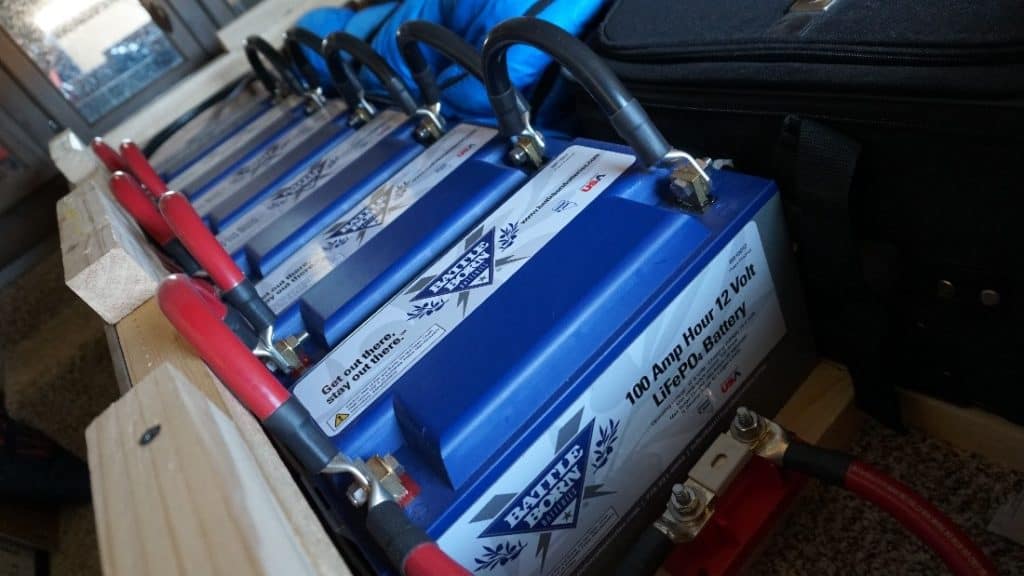
However, if you were to wire three of these same panels in series, the maximum output voltage would be 54-60 volts. This would mean your panel array would only need to operate at around 25% capacity to provide a charge to your batteries. Operating at 25% capacity is much easier to achieve even late in the day or on cloudy days. It is important to remember that you will need an MPPT charge controller for a system like this to work.
Wiring your solar panels in parallel is not necessarily a bad option. MPPT charge controllers are more expensive and may be overkill for small portable applications. If you have a small low-voltage system for an RV or boat that might be in variable lighting conditions, a parallel system may be a great option. Systems like this will work great with a lower-cost PWM charge controller, which will save you money.
☀️ Check out our Solar Panel Maintenance Guide to learn how to maintain and repair your solar investment.
Sometimes the best option isn’t just series or parallel—it’s a combination of both. This method, called series-parallel wiring, connects groups of panels in series and then parallels those groups together.
For example, imagine you have four 18volt 6 amp panels. You could wire two panels in series, giving you double the voltage, and then wire that series pair in parallel with another series pair. The result is a 2S2P (two in series, two in parallel) configuration.
Think of it as making “bigger panels” (the series pairs) and then wiring those larger panels together in parallel.
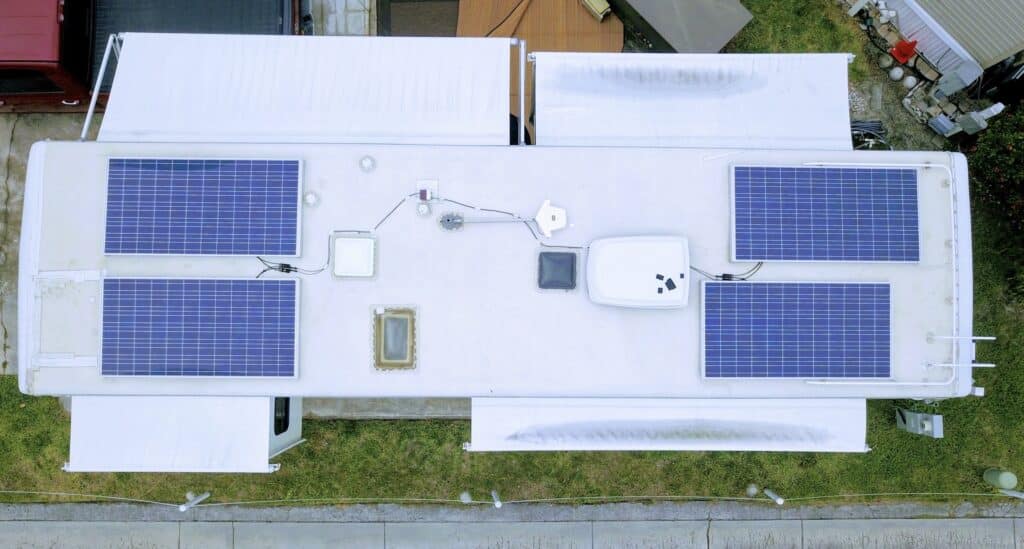
All of our examples have assumed that we are wiring solar panels in series or parallel using identical panels. While this is ideal and is the best option, it is not a requirement. Mixing solar panels from different manufacturers with different electrical ratings is possible, but there are some crucial guidelines to follow.
If you are wiring your solar array in series, all of the panels should have the same current rating. The voltages will still add together, but the current output will be equal to the lowest-rated panel in the series.
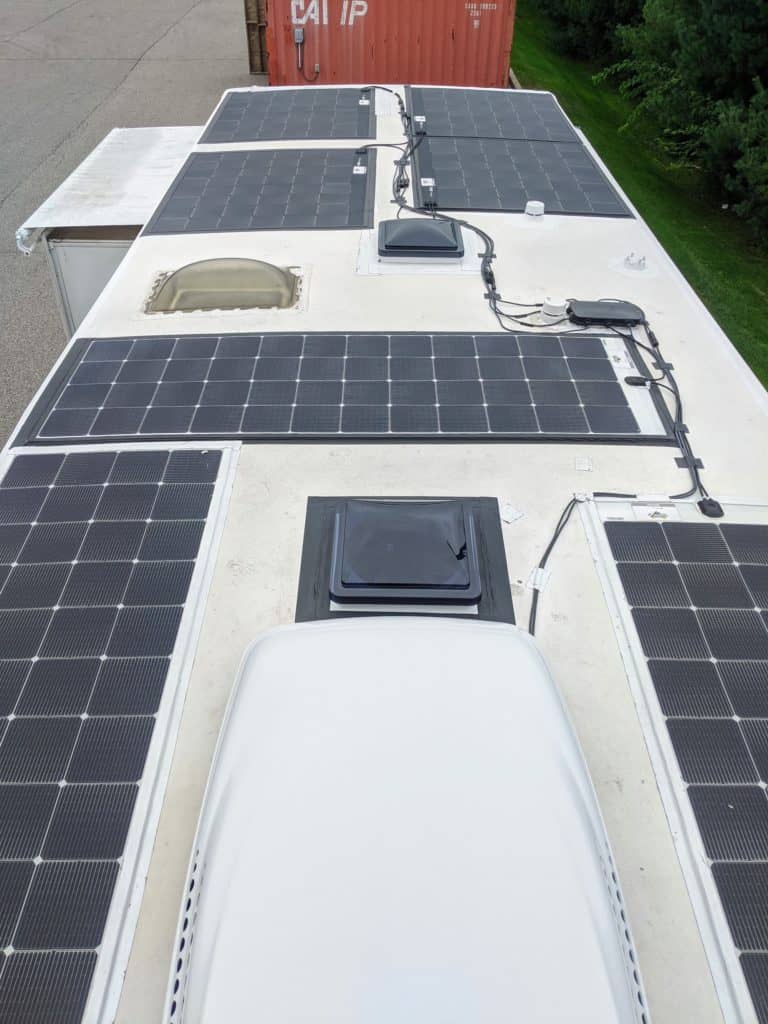
In our first example, if one of the 18-volt panels has a current rating of four amps instead of six amps, the output of the whole system would be four amps. This means the total power would drop from about 324 watts (54 volts X 6 amps = 324 watts) to 216 watts (54 volts X 4 amps = 216 watts).
Alternatively, when wiring your solar array in parallel, all of the panels should have the same voltage rating. The system output voltage will match the panel with the lowest voltage rating.
In general, it’s best to use the same panels in each array on a charge controller. To optimize mixing solar panel types using multiple charge controllers, with each panel array on its own controller, will maximize solar output.
There is no right answer to whether you should wire your solar panels in series or parallel. Both options have benefits and drawbacks. The decision is based on your needs and application.
Which option fits your needs best? If you’re unsure, you can always give us a call at (855) 292-2831.
→ Should you wire your batteries in series or parallel? Read our article to learn how to choose the wiring method for your system: What’s The Difference Between Wiring Batteries In Series Vs. Parallel?
We know that building or upgrading an electrical system can be overwhelming, so we’re here to help. Our Reno, Nevada-based sales and customer service team is standing by at (855) 292-2831 to take your questions!
Also, join us on Facebook, Instagram, and YouTube to learn more about how lithium battery systems can power your lifestyle, see how others have built their systems, and gain the confidence to get out there and stay out there.
Shop Best Sellers
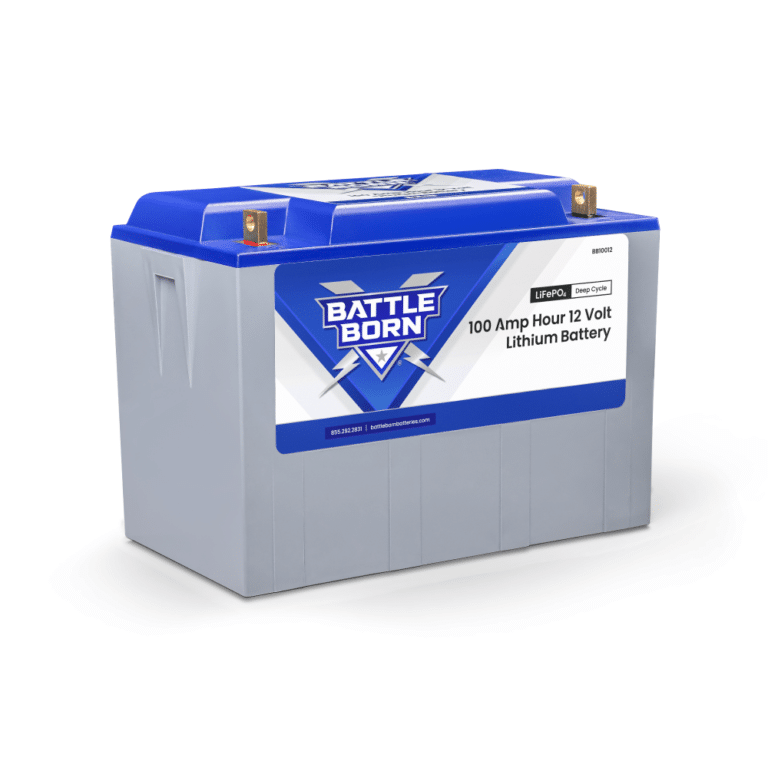
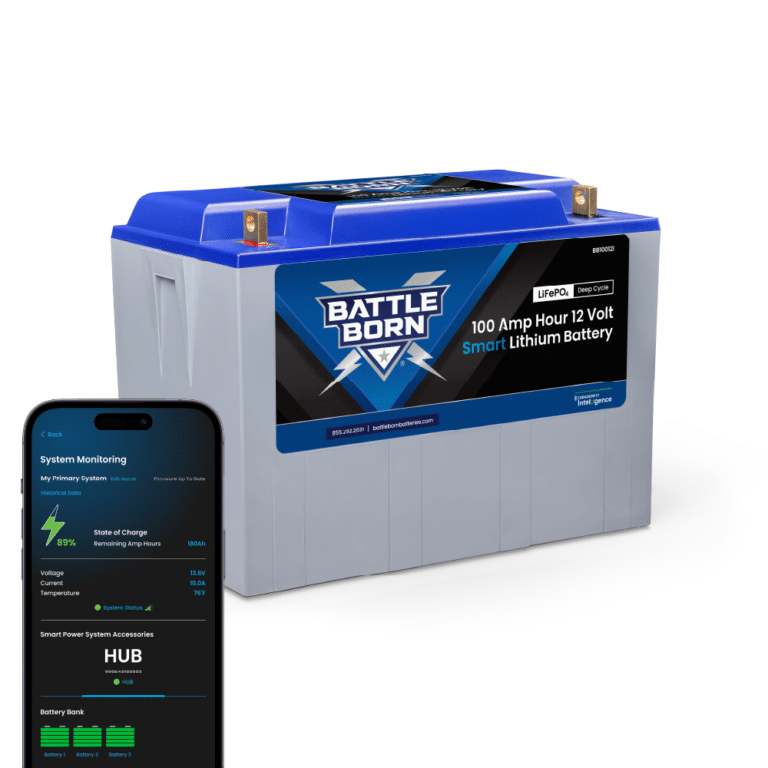
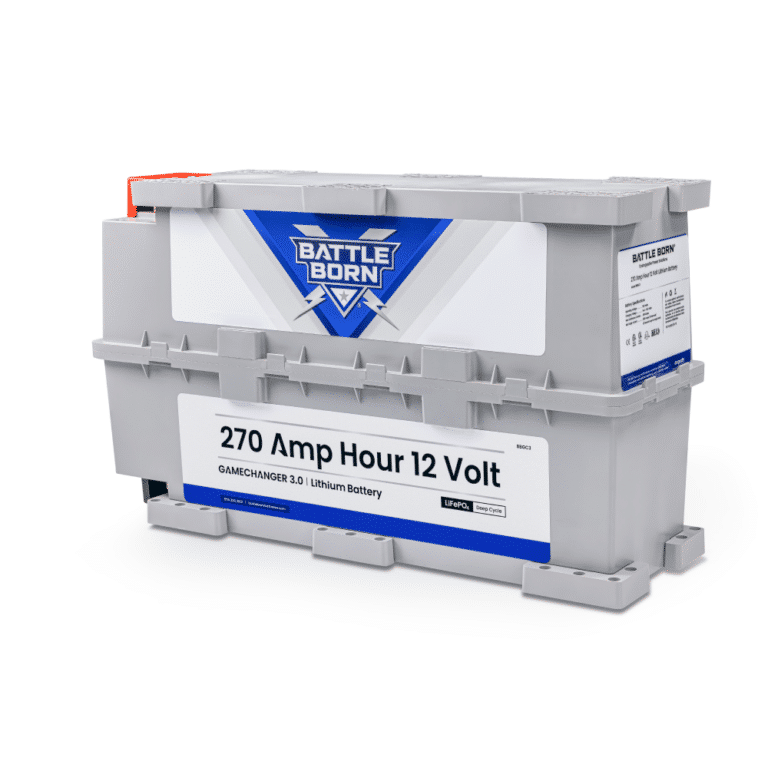
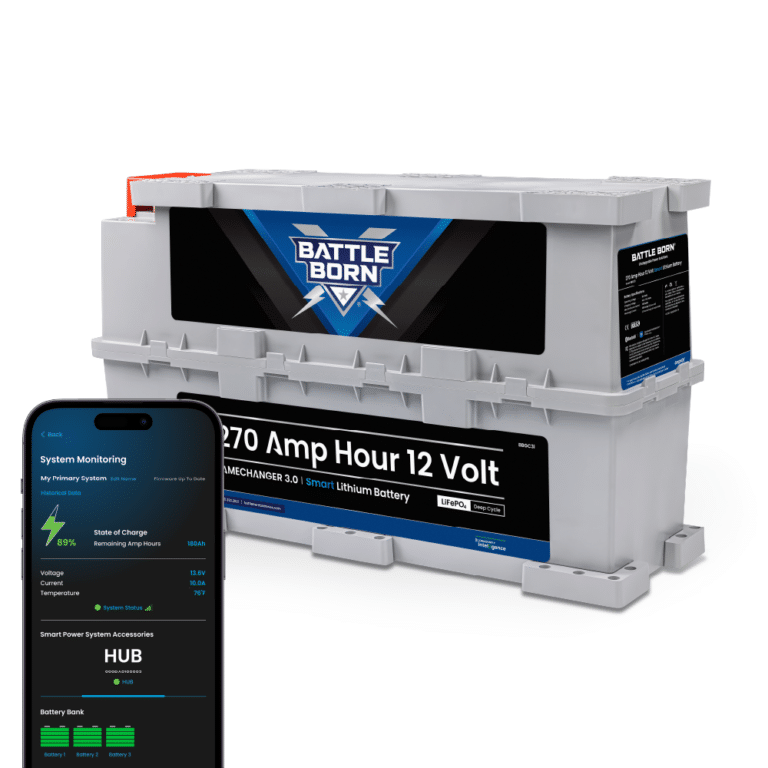
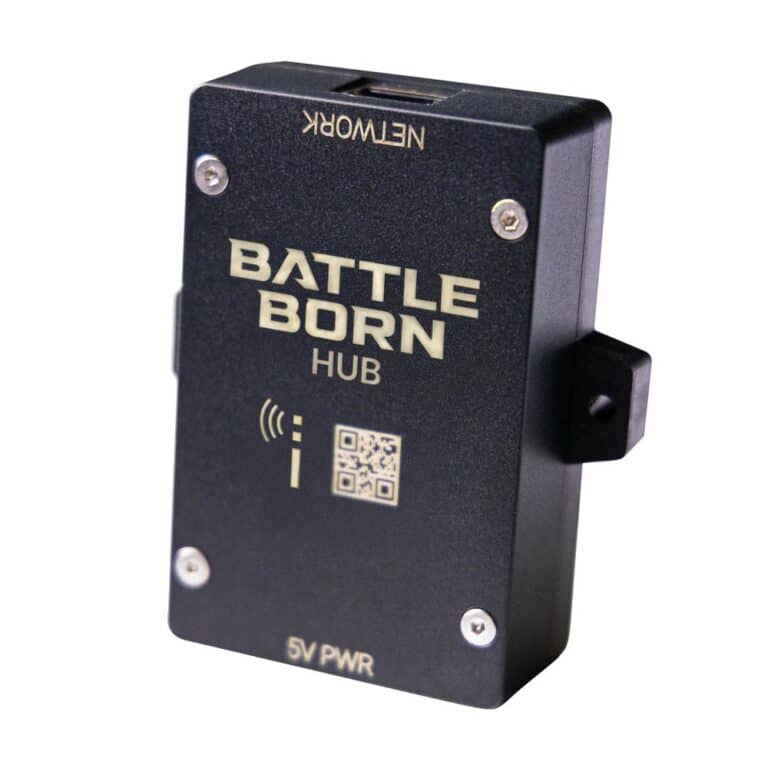
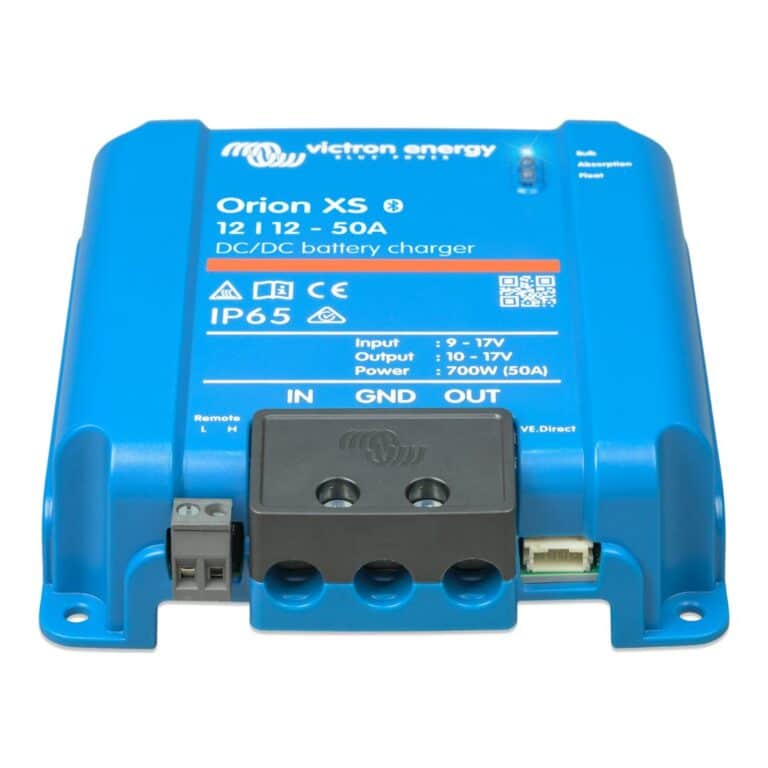
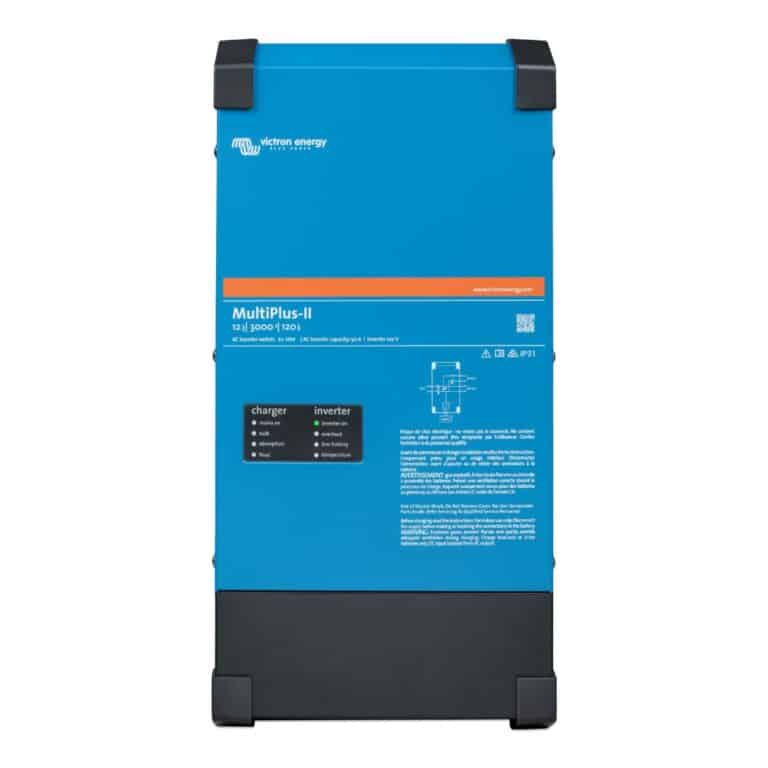

Ask a technical specialist now at 855.292.2831
Stay in the Know
17 thoughts on “What’s The Difference Between Wiring Solar Panels In Series or Parallel?”
Can I connect my 4 Battleborn 12V batteries in parallel and Seies (2P2S)? If so, and special instructions beyond balancing them all first?
Yes, you can! Check out this post for more information: https://battlebornbatteries.com/batteries-in-series-vs-parallel/
Thanks for pointing out that the best setup for the solar panels we will get will depend on the needs and applications we might have, since both options have benefits and drawbacks. I will make sure that I look for an expert to help me with my decision before I think about it, especially when I am not sure what is best for the location we are in. The climate here in our area might also have an effect on the type of energy we might be able to harness from the sun.
Great insights on the wiring options for solar panels! Understanding the difference between series and parallel connections is crucial for optimizing solar systems. This article breaks down the complexities, making it easier for both novices and enthusiasts to make informed decisions. Thanks for shedding light on this important aspect of solar panel installations!
Thanks for breaking down the differences between wiring solar panels in series and parallel. I’ve been considering adding solar to my home and this information has been incredibly helpful in making an informed decision. I’m leaning towards parallel wiring for my particular setup, but it’s great to have a clear understanding of the benefits and drawbacks of both methods. Looking forward to sharing this post with my friends and family who are also considering solar!
awesome
Thanks for explaining the difference between wiring solar panels in series and parallel. I was wondering what the main advantage of parallel wiring was, and you provided great examples. I’m currently considering installing solar panels for my home and this information was super helpful. Can’t wait to see more posts like this!
I appreciate your detailed explanation on the distinction between wiring solar panels in series and parallel. I had been curious about the primary benefit of parallel wiring, and your insightful examples truly clarified the concept for me. As I contemplate the installation of solar panels for my residence, the information you shared has proven to be incredibly valuable. I eagerly anticipate reading more posts of similar quality in the future.
I appreciate you outlining the distinctions between series and parallel solar panel wiring. I was curious about the primary benefit of wiring in parallel, and your excellent examples answered my question. I’m thinking of adding solar panels to my house, so this information was quite beneficial. I’m eager to see more articles just like these!
Thanks for explaining the difference between wiring solar panels in series and parallel. I was wondering what the main advantage of parallel wiring was, and you provided great examples.
awesome
I’ve been considering installing solar panels on my home and never thought to consider the differences in wiring them in series or parallel. This article was super informative and helped me understand the pros and cons of each method. I’m definitely going to share this with my contractor before we start the installation process.
Thanks for explaining the difference between wiring solar panels in series and parallel.
I was considering installing solar panels on my home and wanted to thank you for explaining the difference between wiring solar panels in series and parallel. I was curious about the main advantage of parallel wiring, and your examples were very helpful. This information has been invaluable as I plan my installation. I look forward to more posts like this!
I’ve been exploring the option of installing solar panels at my home, and I hadn’t fully realized the impact of wiring them in series versus parallel. This article was incredibly enlightening and clarified the advantages and disadvantages of each wiring method. I’ll definitely share this information with my contractor before we proceed with the installation.
Thank you so much for explaining the difference between the series.
I’ve been considering the installation of solar panels at my home and didn’t fully understand the differences between wiring them in series versus parallel. This article was incredibly informative and helped clarify the pros and cons of each wiring method. I will definitely share this information with my contractor before we move forward with the installation.